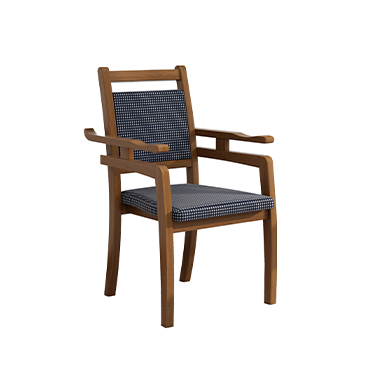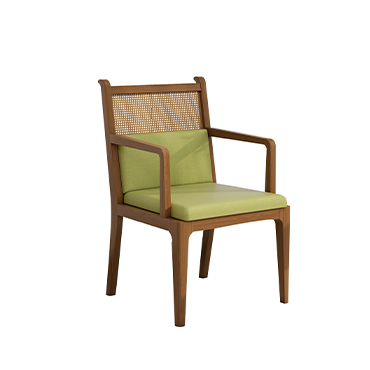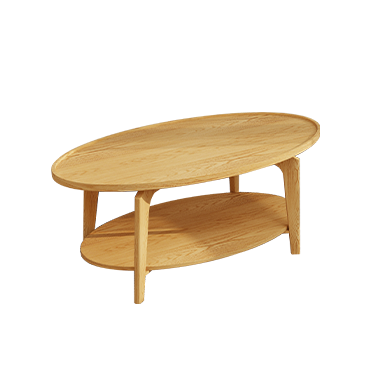What is Elderly-Friendly Furniture? Basic Definition and Key Features
Introduction
As the global population ages, the quality of life and living environments for the elderly have become a focal point of societal attention. Elderly-friendly furniture, which is designed to provide comfort, safety, and health for the elderly, has become an important development direction in the furniture industry in recent years. So, what exactly is elderly-friendly furniture? What basic features and design elements does it have that cater to the special needs of seniors in their daily lives?
Basic Definition
Elderly-friendly furniture, as the name suggests, refers to furniture specifically designed for the elderly to enhance their comfort, safety, and convenience in their living environment. The design takes into account the physical characteristics of the elderly, such as reduced mobility, muscle atrophy, and diminished eyesight, while also addressing their quality of life and psychological needs. Elderly-friendly furniture focuses on improving health, reducing the risk of falls and accidents, and promoting independent living for seniors.
The Original Purpose of Elderly-Friendly Furniture
The original purpose of elderly-friendly furniture design is not only to meet the basic functional needs of seniors but also to enhance their quality of life. These furniture pieces are designed with more humanized and intelligent features compared to traditional furniture. For example, elderly-friendly sofas are often designed with slightly higher seating to allow elderly individuals to sit and stand more easily. Similarly, elderly-friendly beds are designed to help seniors maintain a good sleeping posture, reducing pressure on the back and joints and preventing health problems caused by poor posture.
Key Features of Elderly-Friendly Furniture
1.Safety
Safety is one of the most critical design standards for elderly-friendly furniture. Seniors are more prone to falls and accidents due to physical decline, slower reactions, and poor balance. Elderly-friendly furniture typically features a sturdy structure with wide bases and non-slip bottoms to prevent tipping or sliding. In addition, corners and edges of furniture are often designed to be rounded to avoid injuries from sharp edges.
2.Comfort
Comfort is a primary consideration in elderly-friendly furniture design. The seating height is often designed to be slightly higher to facilitate sitting down and standing up without additional help. Bed designs are aligned with the natural curvature of the elderly person’s back to provide sufficient support and help reduce strain on muscles, joints, and bones. Additionally, cushions and backrests are often made from memory foam or other ergonomic materials to ensure comfort over extended periods of use.
3.Convenience and Ease of Use
As seniors age, their ability to perform physical tasks decreases, so operating complex furniture may become inconvenient. Therefore, elderly-friendly furniture emphasizes ease of operation and adjustment. For instance, chairs and beds with adjustable features allow seniors to modify angles for better rest and relaxation. Additionally, furniture often incorporates armrests or support points for extra assistance.
4.Barrier-Free Design
Elderly-friendly furniture often incorporates barrier-free design principles to eliminate unnecessary physical obstacles or inconvenient features. For example, door handles and drawer pulls are designed to be easy to grip, making them easier for seniors to use. In some special designs, barrier-free features include height-adjustable dining tables or desks tailored for seniors with mobility issues.
5.Smart Features
Modern elderly-friendly furniture increasingly integrates smart design to meet the higher quality of life demands of seniors. For example, smart beds can automatically adjust the height and angle of the bed to help seniors get in and out of bed with ease. Sofas with sensors can detect if the elderly person is sitting correctly, and if they remain motionless for an extended period, the system sends a reminder signal. Additionally, some furniture can be connected to smart home devices for voice control and remote adjustments.
6.Aesthetics and Emotional Design
Although the primary focus of elderly-friendly furniture is on functionality, aesthetics and emotional design are also important. A warm and cozy design not only brings visual enjoyment to seniors but also enhances their psychological well-being. For example, gentle color schemes and simple, elegant design lines create a peaceful, harmonious living environment, reducing anxiety and feelings of isolation among seniors.
Conclusion
Elderly-friendly furniture is a category of furniture that comprehensively considers the physical condition, life needs, and psychological health of seniors. It focuses not only on the practicality of the furniture but also on meeting the elderly’s need for comfort, safety, and independence. With features such as safety, comfort, convenience, barrier-free design, and smart functionality, elderly-friendly furniture helps create a safer and more enjoyable living environment, allowing seniors to live their later years in peace and comfort.
As society ages, the elderly-friendly furniture industry will continue to grow, offering vast development opportunities. In the future, designers and manufacturers will keep pushing for innovations in furniture design, improving the quality of life for seniors and allowing them to experience not only comfortable living but also the care and respect of society.





